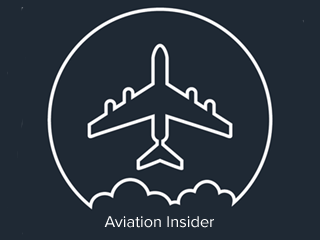Our full list of Hour Building providers can be found here
About the course
This phase can take as long as you want it to, however on an Integrated course, you are set a structured time period in which to get it done, weather permitting of course.
Course requirements and structure
- Modular students, as per requirements, need to build 200 flying hours, of which 100 are PIC, of which 20 are cross-country. As Modular pilots will have a PPL, they can choose to either fly ‘solo’ or take friends and family with them as passengers. Flight routes and exercises are usually left up to the student, just as long as the hour requirements are met.
- Integrated students as part of an accredited ATO only need to build 150 flying hours, of which 70 must be PIC, of which 50 are cross-country. Flight routes and exercises are usually set out by the ATOs, similar to a lesson plan. As on an Integrated course, you don’t have a PPL by the points, you usually fly your solos with an ‘instructor signoff’ which you get before each flight and so it is not possible to take friends and family up with you.
- The PIC hours must include a solo 300nm Qualifying Cross-Country flight (QXC), that involves landing at 2 other airfields than the one you departed initially.
Equipment
All of the equipment required for the Hour Building phase is the same as that required for the PPL which can be found here. In addition, you may wish to purchase a flight navigation app for Ipad, to assist you on navs, however please note that for your CPL skills test, you won't be allowed to use this as you will be required to use a conventional VFR chart, therefore it is advised to practice strict, close discipline from the start.
What To Look For In A Training Provider
- EASA CAA Registered.
- Well maintained and serviceable aircraft, as well as availability, scheduling and regularity of lessons.
- Qualified instructors available.
- Reviews from past students are important, to get a feel of all aspects of the flight school and course.
- Compare costs between schools to ensure it suits your budget.
- Student support to ensure that your progression throughout the course is as smooth as possible.
- Ask for transparency on prices and packages, i.e inclusion of instructor fees, landing fees, fuel etc
Our full list of Hour Building providers can be found here
Tips and Advice
- Good Airmanship from the start is key and should be practiced throughout your flying career.
- KEEP A GOOD LOOKOUT! Especially as you will be flying solo most, if not all, of the time.
- Prepare well for each flight. Make sure that you fully understand your lesson briefs and have checked the weather, and understand aircraft checklists.
- Ensure that you are confident with track error correction methods, such as Standard Closing Angle, Closing Angle and ‘Double-and Half’, so that if you find yourself off-track, you can promptly get back on track safely.
- Complete your aircraft checks properly. It's better to spot a fault on the ground rather than in the air!
- Try to plan a variety of routes if you can, which will test various areas, such as airspace transits, military zone transits, landing at different airfields etc. For Integrated courses, your routes will usually be set out for you, but feel free to discuss with your instructor if you would like to try something different.
- ASK! ASK! ASK! . If you are unsure about anything or have any queries, ask your instructors who should be more than happy to help.
- Form strict discipline from the start, as it will stand you in good stead for the rest of your flying career, especially if you choose to transition to commercial flying. Familiarise yourself with and learn the procedures for flight.
- Practice your ‘RT’ calls and understand the standards using CAP413
- Do your mass & balance and performance for your flight as this is a safety regulation.
- Adopt good eating and resting habits by ensuring you have a nutritious meal around 1-2 hours before flying, and be well rested. Also make sure you have water and snacks in your flight bag.
Common Mistakes
- Not managing workload properly and getting overloaded or distracted. Try and prioritize tasks and approach each one in a calm and collected manner. This will come with experience and good practice.
- Not maintaining strict discipline from the start. Hour Building is meant to be a fun phase, but don't let that allow you to fall into lazy and bad habits, as this will follow you into the following stages of training.
- Not knowing Pitch & Power settings, or Speeds off by heart. This doesn't take long at all to commit to memory, but will prove crucial while flying.
- Misjudging the weather and having to return very soon after departure.
- Misidentifying ground features during a navigation, or incorrectly calculating Cross Track Error.
- Not knowing the correct RT calls. Ensure you know the standard calls and transmissions.
Next Steps
- Night Rating
- Hour Building (towards Commercial Pilot Licence - CPL)
- ATPL Theory Ground school and Exams.
- Instrument Rating - IR (Multi/Single Engine)
- Multi Engine Piston Rating - MEP
- Commercial Pilots Licence
- AUPRT
- MCC / APS MCC
- Airlines/ Companies
Our full list of Hour Building providers can be found here



